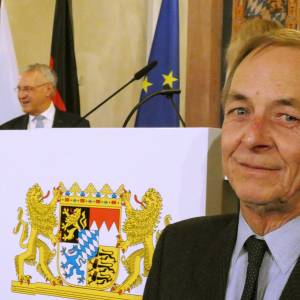Feldgeschworene
"Field Juror" or as it was in Bavaria until the 1980s, "Field Juryman". Bavaria reacted to the #MeToo movement way back then and let women carry out this 500-year-old traditional and very responsible position in the workings of local - democratic - self-government.
In 2016, UNESCO included the title/job in its Intangible Cultural Heritage List. When in 1970, the Bavarian State Government tried to do away with this official voluntary/trust position, there was a storm of protest & it was retained.
The position is mainly carried out in the northern Bavarian part, Franconia, where alone 15,000 of the total 25,000 Bavarian Feldgeschworene operate. Only two other German States have the same tradition:
- Rhineland-Palatinate, bordering on France, Luxembourg & Belgium and much of which used to be part of Bavaria until the Allies finally kicked out the Bavarians in 1947. It had also been under French control from 1918 to 1928 for WWI reparations.
- parts of Thuringia on Bavaria's northern border & which was from 1945-1990 part of East Germany. Presumably, those areas that were until 1918 under the rule of Queen Elizabeth II's family, the House of Saxe-Coburg-Gotha (aka Windsor).
Now I hear you scream: "What on earth is he talking about?"
A Feldgeschworene is someone from the local community who like a juror is sworn to secrecy & impartiality and carries out inspections of the boundary markers to make sure everything has its place & order. They can reset markers that have been damaged or need to be moved vertically due to say road or building works. Since 1900 the work has largely been done by each State's "Cadastre" civil servants - I guess that may be Ordnance Survey in the UK. Although the three States retain the old voluntary positions, they are no longer able to pass judgement on disputes. Probably just as well as no doubt there have been disputes in villages which have poisoned the local atmosphere in the pub when the Feldgeschworene came in for a pint.
Possibly the local Feldgeschworene may have to reprimand the farmer for ploughing up this boundary stone - a few days later it had been moved a few meters more into the field by a harrow - but if the visible hole is still there, I doubt there will be any problem.
Here the English website of the Bavarian Surveying Dept, also responsible for digitalisation & hi-speed internet! They have some great information on their interactive "Bayern Atlas" maps with such things as wind turbines, footpaths, cycle paths etc .
It does strike me that some farmers go "over the edge" to get a few extra centimetres of ground from the common ownership path. Not in this case but very often, you will see the stone & gravel foundation being ploughed up & undermining the path over the years - never mind getting more stones on the field & breaking farm equipment.
PS If you look at the Geotag in Satellite view, you will get some idea of just how many different parcels of land there are and how many such stones there must be. It has a lot to do with Germany's inheritance laws which mean wealth is divided amongst all the benefactors equally rather than a system where a will gives certain objects to certain people.
It also helps to explain why we have so many well maintained tracks for both walking & horse riding - every owner of a parcel of agricultural land must have farm-vehicle-suitable access.

Comments New comments are not currently accepted on this journal.